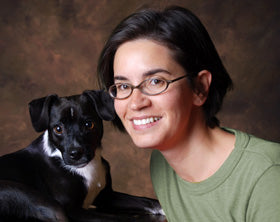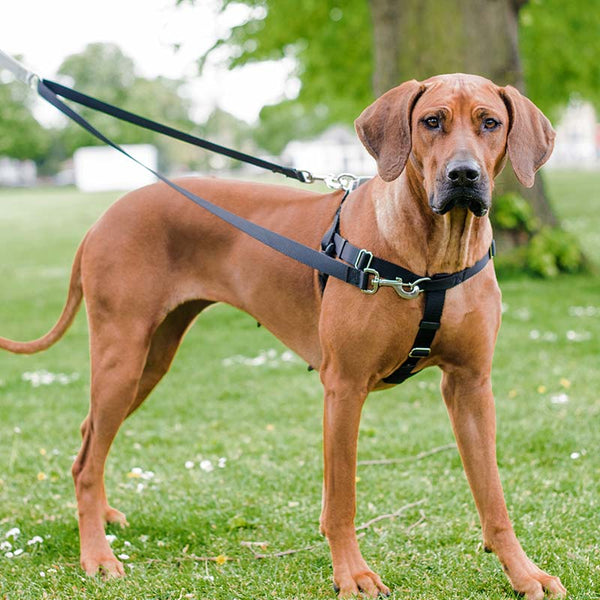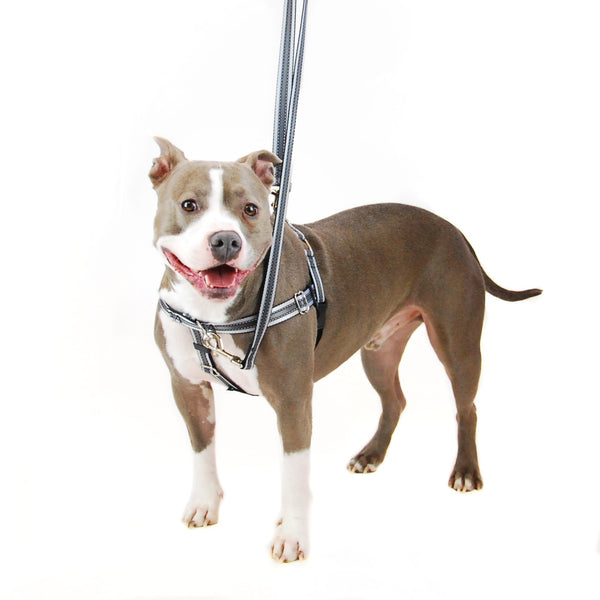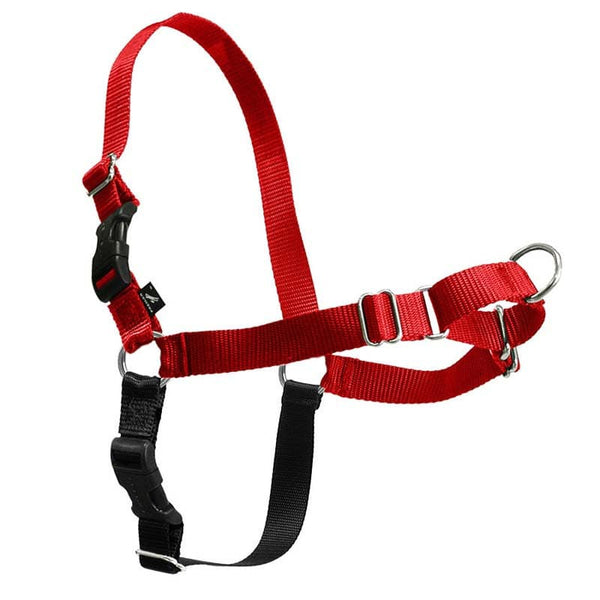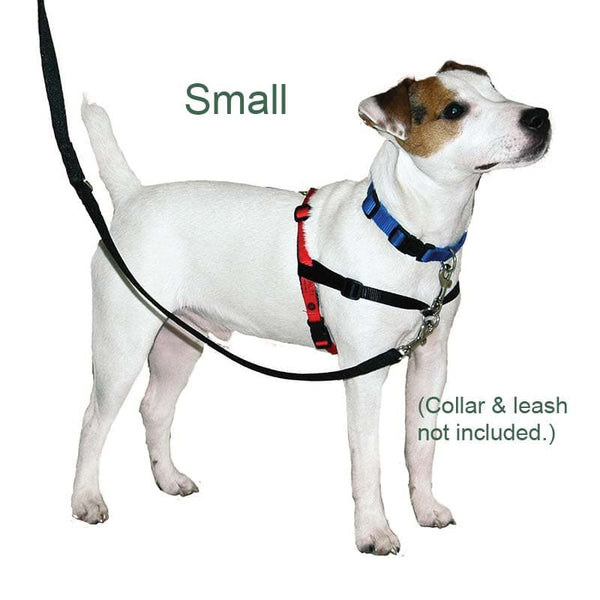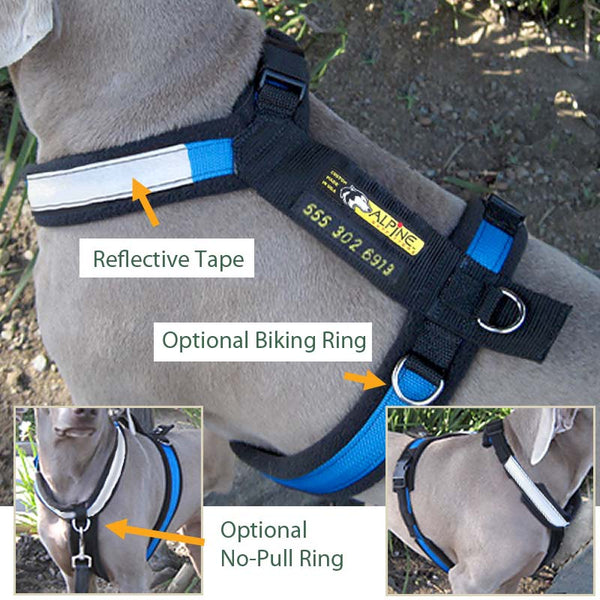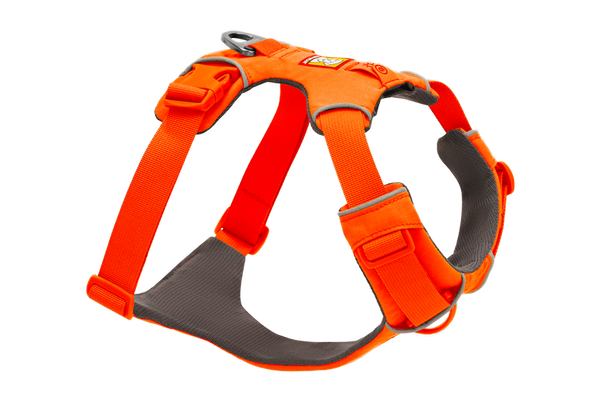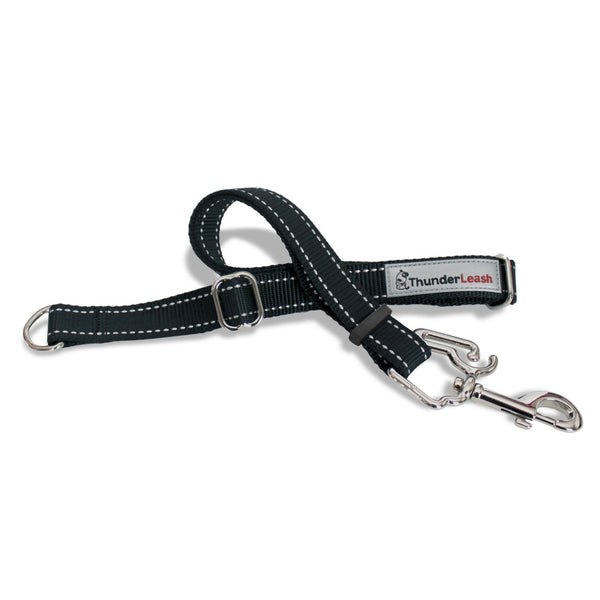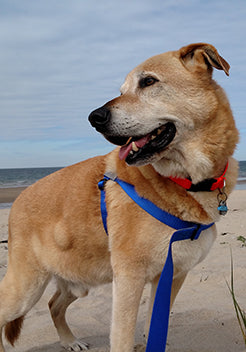Think Like a Dog Trainer. Part 8: On a Walk
By Jess Rollins
Copyright Info

Here is part 8 of a multi-part article designed to alert you to the many of the potential pitfalls of living with an untrained dog and how to best cope with them. In each description of a potential problem, I will outline how you can prevent it, how to teach good behavior, and what to do as an immediate response if you find yourself in a situation where you need to quickly stop him from misbehaving. Ideally, you will proactively prevent your dog's misbehavior and hence will not have many "Ack, STOP that!" moments. Using the "immediate responses" below more than a time or two each day could set back your training efforts with your dog and prevent him from learning how to behave politely. Therefore, if you find yourself relying on them too heavily, simply increase the prevention you are doing and make sure that your rewards for good behavior are truly rewarding to him. The immediate responses below are designed to interrupt your dog without either rewarding his misbehavior or frightening him.
Part 8 - Going for a Walk with Your Dog
Recommended gear: ID for your dog, aggressive dog deterrent spray (just in case), small treats, a front-attachment harness or head collar a 6 foot leash and poop pick-up bags.
I don't recommend retractable leads for several reasons. They can be dangerous by allowing your dog to dart in front of traffic, can spook him and cause him to run away from you if you drop it and it clatters after him, and they can get easily tangled even possibly severing fingers.
On your walk you will meet many challenges and chances for learning "“ enjoy!
Potential problems to be alert for on your walk:
Pulling on the leash
This can be dangerous if your dog is much stronger than you are, or the conditions are slippery.
- Prevent: NO-PULL-GEAR* or use a long leash when safe. (*Words in all caps are described in the key at the bottom of the page).
- Immediate response: Stop walking or change directions when your dog pulls.
- Train: LEASH-MANNERS. Reward him for walking by your side.
Lagging behind
Encourage your dog by rewarding him when he comes along with you. Keep a gentle pressure on the leash and release it once he catches up to you.
Darting in front of you
Stomp or shuffle your feet while you walk to make your presence more obvious.
Picking up trash
- Prevent: Keep on the look-out for trash and use the leash to prevent him from being able to reach it.
- Immediate response: If he gets the item in his mouth, DROP-IT. If he doesn't have the item in his mouth, just lead him away with the leash.
- Train: LEAVE-IT for objects on the ground while on walks.
Car chasing or fear of cars
If your dog is afraid of cars or wants to chase them you can teach him that cars make treats happen and change his mindset.
- Train: HEEL. Reward him for being calm around cars.
- Immediate response: WALK-AWAY.
- Train: Consider contacting a professional trainer for help as chasing cars can be a very dangerous habit that should be addressed right away. If your dog is afraid of cars you can teach him cars are a good thing by feeding him tasty treats whenever a car appears and also by just hanging out a good distance away from cars until he gets used to them and gradually moving closer.
Pulling to greet people or other dogs
- Prevent: NO-PULL-GEAR
- Immediate response: Stop walking or change directions when your dog pulls. If you feel that it is safe for him say "hello", make sure that you don't allow him to pull on the way. Keep a good hold on him to prevent jumping up. If it's not a good idea for them to meet, WALK-AWAY.
- Train: LEASH-MANNERS
Jumping up on people
- Prevent: RESTRAIN
- Immediate response: Ask the person to ignore him if he jumps and to give him attention when he has all four paws on the ground. Move him away from the person if he jumps up until he has calmed down.
- Train: 4-ON-FLOOR
Barking at people or dogs
our dog may bark on his walks either because he is afraid of others or he is so excited to see them he can't contain himself.
- Prevent: If possible avoid areas on your walk that cause him to bark in such excitement that he will not pay attention to you.
- Immediate response: WALK-AWAY. Consider contacting a professional trainer for individual help.
- Train: QUIET
Escaping the collar
- Prevent: Use an escape-proof collar (also called a martingale or limited-slip). Make sure that your dog is wearing an ID tag.
- Immediate response: GET-THAT-DOG!
- Train: COME
Chasing small animals
- Prevent: NO-PULL-GEAR
- Immediate response: WALK-AWAY
- Train: HEEL. Be sure to make heeling easy for him and to use lots of rewards. Also reward him whenever he is calm around animals he would normally want to chase.
Off-leash dogs approaching you and your dog
Try tossing treats far away from you to occupy the loose dog while you walk away or if the dog is not leaving you and your dog alone and it is necessary, use an aggressive dog deterrent.
Key:
|
Instructions: |
|
|
Click for more information on teaching your dog to greet people politely without jumping up. |
|
|
COME |
Train him to come when you call by using the instructions here. |
|
DROP-IT |
Ask him to "drop it". If he does not yet know "drop it", show him a treat to induce him to open his mouth. If he still won't release the item, force his mouth open using the technique described here. Click for instructions on how to train your dog to "drop it". |
|
GET-THAT-DOG! |
Go and get him if he has escaped. Reward him for coming to you or allowing you to catch him. |
|
HEEL |
|
|
LEAVE-IT |
|
|
LEASH-MANNERS |
Click here for instructions on how to teach him to walk beside you on a leash without pulling. |
|
NO-PULL-GEAR |
Use a front-attachment harness or head collar for better control. |
| QUIET | Click here for instructions on how to teach your dog to be quiet. |
|
RESTRAIN |
Restrain him with your leash or avoid approaching people until he has learned how to greet people without jumping up. |
|
WALK-AWAY |
Put a treat to his nose to get his attention and lead him away with it. Feed him the treat once he has calmed down. If he is ignoring the treat just lead him away with the leash. |
Click for Part 7: The Dog Park
Click for Part 9: Visiting the Pet Store




